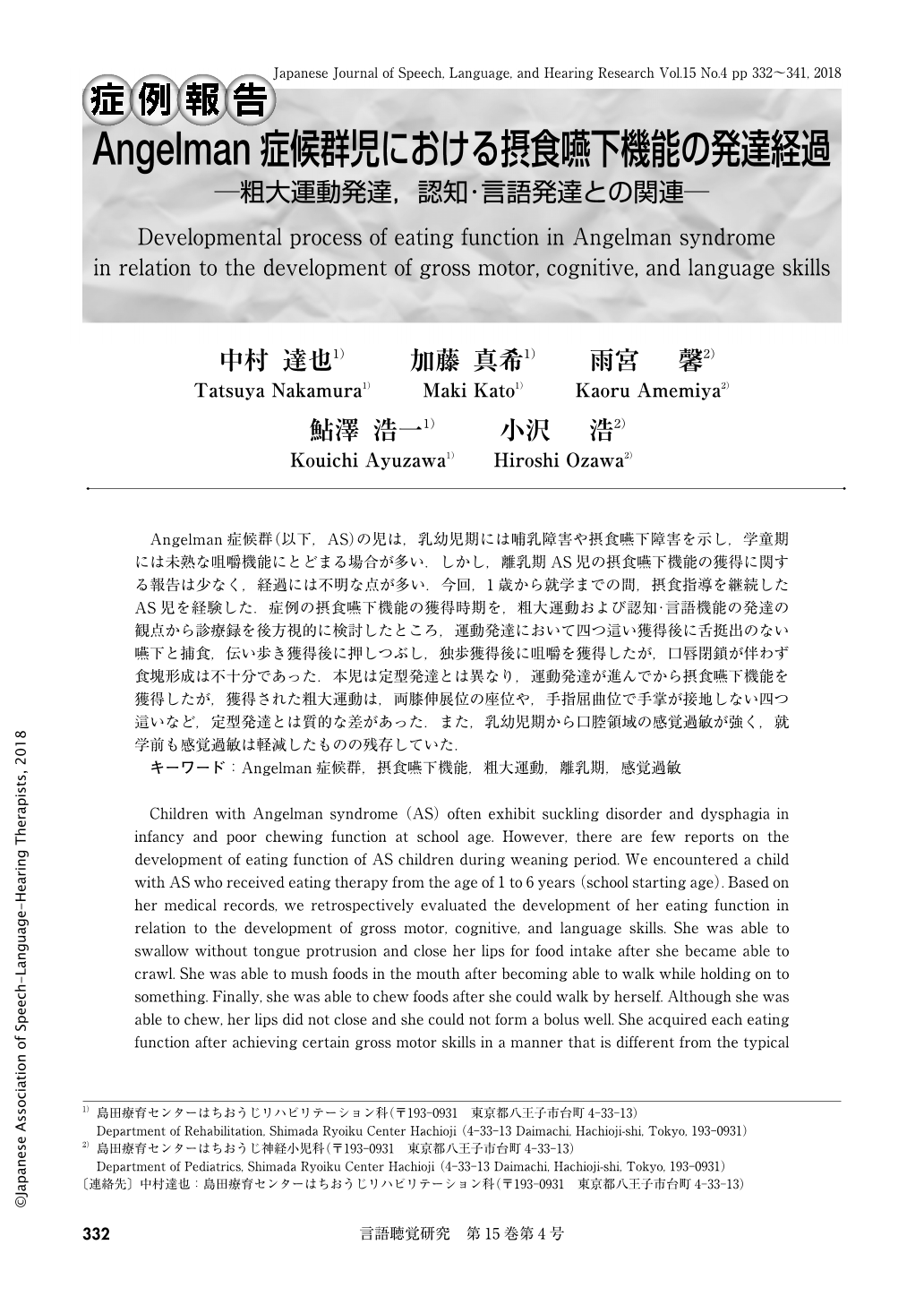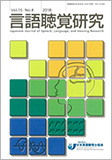Japanese
English
- 有料閲覧
- Abstract 文献概要
- 1ページ目 Look Inside
- 参考文献 Reference
Angelman症候群(以下,AS)の児は,乳幼児期には哺乳障害や摂食嚥下障害を示し,学童期には未熟な咀嚼機能にとどまる場合が多い.しかし,離乳期AS児の摂食嚥下機能の獲得に関する報告は少なく,経過には不明な点が多い.今回,1歳から就学までの間,摂食指導を継続したAS児を経験した.症例の摂食嚥下機能の獲得時期を,粗大運動および認知・言語機能の発達の観点から診療録を後方視的に検討したところ,運動発達において四つ這い獲得後に舌挺出のない嚥下と捕食,伝い歩き獲得後に押しつぶし,独歩獲得後に咀嚼を獲得したが,口唇閉鎖が伴わず食塊形成は不十分であった.本児は定型発達とは異なり,運動発達が進んでから摂食嚥下機能を獲得したが,獲得された粗大運動は,両膝伸展位の座位や,手指屈曲位で手掌が接地しない四つ這いなど,定型発達とは質的な差があった.また,乳幼児期から口腔領域の感覚過敏が強く,就学前も感覚過敏は軽減したものの残存していた.
Children with Angelman syndrome (AS) often exhibit suckling disorder and dysphagia in infancy and poor chewing function at school age. However, there are few reports on the development of eating function of AS children during weaning period. We encountered a child with AS who received eating therapy from the age of 1 to 6 years (school starting age). Based on her medical records, we retrospectively evaluated the development of her eating function in relation to the development of gross motor, cognitive, and language skills. She was able to swallow without tongue protrusion and close her lips for food intake after she became able to crawl. She was able to mush foods in the mouth after becoming able to walk while holding on to something. Finally, she was able to chew foods after she could walk by herself. Although she was able to chew, her lips did not close and she could not form a bolus well. She acquired each eating function after achieving certain gross motor skills in a manner that is different from the typical development. In addition, her gross motor skills were qualitatively different from typical development. For example, she sat with extended knees and crawled without her palms touching the floor. She had severe oral hypersensitivity from infancy which was lessened but was still present at the age of 6 years.

Copyright © 2018, Japanese Association of Speech-Language-Hearing Therapists. All rights reserved.


